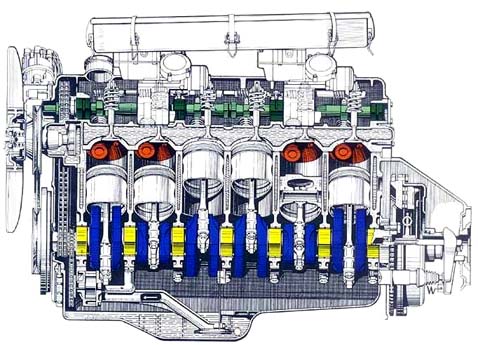BMW Engines: From M to N - Part 1
| BMW has been a leading force in automotive technology for years, especially on the electronics side. Their engines are no exception. The "New Generation" engines incorporate the most cutting edge of these innovations. This article will basically cover BMW's 6 cylinder engines, touch a little on their V8's, and we'll have a poke at a V12. First let's get a little techno speak. BMW uses 4 different letters in their engine identification codes. 1. M – for standard production engines 2. S – for Motorsport engines 3. N - for "New Generation" engines (all the current engines in use are now N designated. It has become the production code letter) 4. P – for prototype engines (have never seen, heard, or read of one. Surely they are well guarded). The second character or first number designates the engine type. · 2 – V6 · 3 - inline 6 · 4 – inline 4 · 5 – inline 6 · 6 – V8 · 7 – V12 · 8 – V10 The 3rd digit specifies the engine technology. There is no real key to go along with this one.
M20 The M20 used only 2 valves per cylinder with a timing belt for the single camshaft and adjustable valves. Old school! The M30 , was the first "big 6" and was produced from 1968 – 1994 for E12, E28, E34, E24, E23 and E32 cars. Continued
M30 Still only a 2 valve per cylinder and an adjustable valvetrain, but upgraded to a timing chain. Timing chains are now used on all BMW engines. They are much more accurate and reliable than belts. There is also no maintenance interval for chains like there is for changing a belt every 60,000 miles or the catastrophic consequences with this common failure. The first technical innovations came with the arrival of the M50 in 1989. Production ran until 1995 and came installed in E34's and E36's. These included 4 valves per cylinder, dual overhead cam valvetrain, direct stationary ignition (RZV) or coil-on-plug, and fully sequential fuel injection. Still modest technology compared to today's standards. A technically upgraded (M50TU) version came in 1993. This saw the introduction of VANOS. The VANOS system was initially only used on the intake cam to provide a variable duration of valve timing to improve engine efficiency and power delivery . The "TU" variant also featured cylinder selective knock control, HFM (hot film meter) air mass sensing, and secondary ignition monitoring . The M52 followed in 1996. This was developed to comply with OBD regulations at that time. What we now know as OBDII. Mechanically similar to the M50, the M52 basically introduced a new engine control system to comply with the regulations. A slight horsepower increase and a large increase in torque were beneficial side effects of the new management system. In 1999 the M52 received a technical update. The M52TU introduced most of the technology and laid the basic building blocks for the venerable M54. The M54 came out the following year in 2000 and production continued until 2006, powering E46, Z3, Z4, E39, E60, X3, and X5 automobiles. The major mechanical change (in North America anyway) was from the M52TU's iron crankcase to all aluminum crankcase and cylinder head. Technical innovations included an electronic throttle (throttle cables were completely eliminated from the M54 onward), variable intake runner length (this will be referred to as DISA), Double VANOS (now intake and exhaust), and new emissions control devices that included "near engine" catalytic converters, and secondary air injection.
M54 cutaway Then "new generation" engines will be the main focus of my engine technical articles. For 2 reasons; these are the engines I am personally most well versed in and spend the most time working on, secondly; they have the newest innovations which includes all of the aforementioned ones. But since I don't want to overload you with too much information at once, I'll stop here but tune in this week when I will talk about the latest, exciting BMW engines. |



0 comments:
Post a Comment